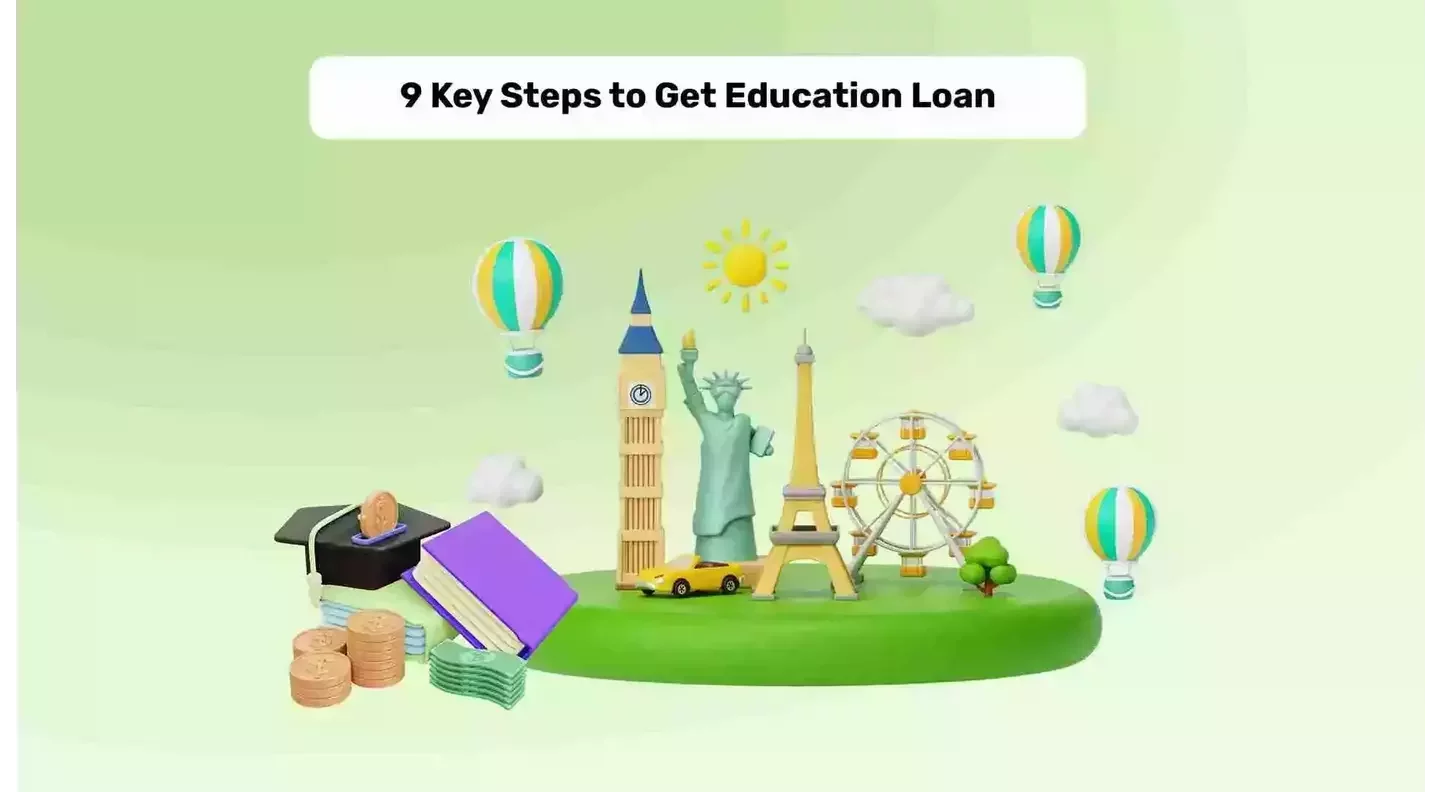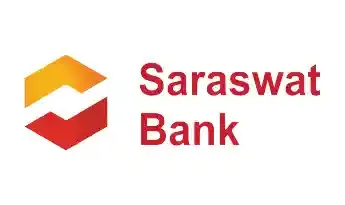Get instant loan offer suitable to your profile !


On this Page:
Learn about the step-by-step process of education loan to study abroad. Get tips, eligibility details, and a comprehensive guide to financing your overseas education
Public Sector Banks (PSBs) have observed a growth of 14.8 percent in the education loan, meaning that INR 28,699 crore of the loan amount was disbursed in 2023-2024. These funds help many students access education opportunities in India and abroad. If you also want to study at prestigious institutions in the US, UK, Canada, or elsewhere globally. But, struggling with finances, read this blog to get a loan for study abroad and make your abroad education easy.

When considering education loans, candidates need to compare education loans from different types of providers. There are four types of education loan providers.
Public banks are government-owned financial institutions. They often have low interest rates and special schemes for students pursuing higher education. Due to their government backing, these loans for study abroad are typically considered more secure and reliable.
Private banks are privately owned financial institutions. They may have slightly higher interest rates than public banks. Private banks often provide more personalized services and may be more flexible in offering education loans tailored to specific needs.
NBFCs are non-banking financial institutions that offer education loans as part of their financial services. They can be an alternative to traditional banks and sometimes offer loans with more relaxed eligibility criteria.
International lenders are financial institutions to students based on their country and course. They offer flexibility in the terms, interest rates, and eligibility criteria. They are the best option for the student if they don’t have the co-signer and collateral.

There are two primary types of abroad education loans: secured loans and unsecured loans.
Secured education loans require the borrower to provide collateral, which is an asset of value (e.g., property, fixed deposit, or other assets) to secure the loan. This collateral serves as a guarantee to the lender that the loan will be repaid.
You can get an education loan for your fixed deposits, Read here.
Unsecured education loans do not require the borrower to provide collateral. Instead, the lender assesses the borrower's creditworthiness based on factors such as credit history, income, and co-signers (if applicable).

Many lenders provide some key benefits when you get an education loan for study abroad. However, these factors will influence the documentation and your decision-making of the applicant:
| Feature | Public banks | Private banks | NBFCs | International lenders |
|---|---|---|---|---|
|
Leading lenders |
SBI, PNB, UBI |
ICICI Bank, Axis Bank, IDFC First Bank |
HDFC Credila, Avanse, Auxilo, InCred, TATA Capital |
MPower, Prodigy Finance |
|
Loan amount |
Up to INR 2 Cr |
Up to INR 1.5 Cr |
Up to INR 75 Lakh |
Up to USD 100,000 (~ INR 80-85 Lakhs) |
|
Interest rates |
9.65% - 11% |
10.85% - 13.50% |
12.25% - 14% |
14% - 16% |
|
Margin Money |
10% - 15% |
15% |
Nil |
Nil |
|
Repayment During Moratorium |
Full Moratorium |
Simple interest/ Partial simple interest |
Simple interest/ Partial simple interest |
Simple interest/ Partial simple interest/EMI |
|
Financial co-applicant requirement |
Not required |
Required for unsecured loans |
Required |
No collateral and co-applicant required |

You might be confused about the top lenders, however, here are some popular lenders that students prefer for loans for study abroad.
| Bank Name | Interest Rate (per annum) |
|---|---|
|
SBI |
9.65% (women) and 10.15% (for males) |
|
PNB |
9.25% |
|
HDFC Credilla |
12.25% - 13% |
|
ICIC Bank |
10.15% |
|
Axis Bank |
10.85% - 11.50% |
|
TATA Capital |
11.25% - 12.50% |
|
Incred |
12.25% - 13% |
|
MPower |
13-14% |
Note: The interest rates are subject to change according to market rates. These rates are updated on Jan 2025.

From loan application to approval and disbursement, the entire loan process is time-consuming, to streamline the student loan application process, it's advisable to begin early. To answer the question “How to take student loan to study abroad?” follow these steps:
Before “How to get an education loan?” hits you, research is important therefore, just a branch visit can’t help. You must explore various financing options available, including government banks, private banks and lenders, and scholarships. Each option has its eligibility criteria, interest rates, and repayment terms.
How to take education loan? The answer is not too straightforward because the loan approval process depends on your country and university. Some lenders may have specific loan programs for particular countries or institutions. Ensure your chosen destination and university are eligible for the loan program you're interested in.
How to get student loan from leading banks? Refer to our ICICI Bank, Axis Bank, and IDFC First Bank loan process blogs and learn about everything from the process to their pre-approved lists of colleges and universities. To learn more about read:



Estimate your total expenses, including tuition fees, accommodation, living costs, and other miscellaneous expenses. This step is crucial in determining the loan amount you need. Create a detailed budget plan to ensure you're borrowing an amount that covers all your financial needs.
Also read: Expenses Covered under an Education Loan
Different lenders and loan programs have varying eligibility criteria. Typically, you'll need to meet the following criteria:




To get an education loan abroad, the following general criteria must be met however, specifics may vary by lender:
The applicant must be a citizen of India and have the necessary identification documents.
For education loans, many lenders require applicants to be between 18 and 35. Yet, some lenders provide loans to students above the age of 35.
Courses must be full-time and listed in the lender’s approved list. But, the best part is that lenders have different categories including different universities, therefore, covering almost all the universities.
A good academic track record is required for unsecured loans and gives a sense of security to the lender regarding repayment of the education loan.
An applicant should calculate the loan amount required to sponsor their studies abroad. Also, know the lender’s maximum loan amount, so you can align with the lender’s maximum loan limit.
The applicant or co-applicant must showcase the ability to repay the loan through stable income or assets.
A co-applicant can be your parent, sibling, or spouse, who shows creditworthiness and income for the education loan. They play a crucial role in getting a loan approval.

Co-applicants and guarantors play an important role in securing an education loan, specifically for the unsecured education loan. A co-applicant and guarantor may be required to submit additional documents such as income proof, bank statements, and tax returns to help assess their financial capability. But, how does their involvement affect your education loan approval?
The co-applicant for an education loan is someone who shares the responsibility of loan repayment if the primary applicant defaults.



A guarantor is backup security for the lender in case both the applicant and the co-applicant fail to repay the loan. However, the guarantor is not mandatory for every lender, it can be necessary in a few cases such as;



You can refer to the table below to create a checklist of the documents required for the education loan.
| Document | Description |
|---|---|
|
Offer Letter |
This letter confirms that you have secured a seat in an accredited foreign institution. |
|
Academic Records (Transcripts, Certificates) |
Lenders confirm your academic scores and evaluate the strength of your profile. |
|
Proof of Identity (Passport, Government ID) |
This is to ensure that you are native to the country and also influence the tax rates on the loan amount. |
|
Proof of Address |
Verifies the residential address to verify the authenticity of the profile. |
|
Income Proof (Salary Slips, IT Returns) |
Unsecured loan options require a security that is provided by showcasing the strong co-applicant profile. |
|
Bank Statements (6–12 Months) |
Gives lenders a snapshot of your transaction history and current financial standing. |
|
Collateral Documents (if the loan is secured) |
If you are getting a secured loan option then you need to provide the collateral documents for the verification. |
|
Co-Signer/Guarantor Documents |
Proves the co-signers/guarantor’s identity, income, and financial capacity, if applicable. |
Also read: Education loan eligibility criteria
Review the terms and conditions of the loan for study abroad carefully. Pay close attention to interest rates, repayment schedules, and grace periods. Understand the difference between fixed and variable interest rates and choose the one that suits your financial stability and risk tolerance.
Once you have selected the lender and understood the terms, it's time to apply for the loan. Most lenders offer online application processes, making it convenient to apply for a loan to study abroad. Be sure to double-check all the information you provide to avoid any delays.
If you receive multiple loan offers, take the time to compare them. Consider factors like interest rates, repayment terms, and any additional benefits or fees. Choose the loan that offers the most favorable terms for your financial situation.
Always ask the loan counselor about the repayment plan to align it with your financial capability. This planning is required otherwise, it might affect your pockets over a longer tenure.
Read about: How to plan your education loan repayment?
Many loan for study abroad are not processed by their university therefore, before saying “Yes” to the disbursement confirm it with the university. This will prevent you from getting charged for the unrequired interest rate.

Applying for multiple lenders at the same time for the loan for study abroad. It can be a hectic process and also consume lots of work however, you can prevent this by applying for an education loan through GyanDhan. You can win half the battle as GyanDhan evaluates your profile and selects the best lender for you. Here are the five simple steps to get an education loan:
Step 1: Check your loan eligibility.
Step 2: An expert education loan counselor will evaluate your profile.
Step 3: Team GyanDhan will either arrange a doorstep pickup for your documents or you will receive a customized checklist to upload.
Step 4: Once the documents are uploaded, GyanDhan will proceed with the rest of the formalities.
Step 5: The bank will disburse the amount as per schedule.
Check Your Education Loan Eligibility

Ask from a community of 10K+ peers, alumni and experts
Trending Blogs
Similar Blogs

Network with a community of curious students, just like you
Join our community to make connections, find answers and future roommates.. Join our CommunityCountry-Wise Loans
Best Lenders for Education Loan

ICICI Bank

Axis Bank

Union Bank

Prodigy

Auxilo

Credila

IDFC

InCred

MPower

Avanse

SBI

BOB

Poonawalla

Saraswat